Readers who have been sheltering in place as of late should have no lack of diversions – spring is typically the busiest time in our gardens. Staying close to home provides an opportunity to attack our to-do list in a virus-free environment. The fresh air and sunshine will promote a feeling of well-being as you divide and transplant, repair fencing or perhaps finally dig up that declining shrub.
Atthe top of my to-do list is adding to my plantings of various milkweeds, which benefit the monarch butterfly larva. The eastern monarch is an iconic butterfly in our gardens. Sadly, the species is in serious trouble. The monarch butterfly population in North America has plummeted by as much as 90 percent in the recent decades. Destruction of the ecosystems of grasslands – stemming from land development and today’s agricultural practices involving widespread spraying of weed killer on fields – has contributed to their decline. Additionally, farms once had rough, weedy borders that were great sites for milkweed but these have disappeared with newer farming practices that push crops to the very edge of the fields.
Another concern is global climate change and the deforestation in their Mexican wintering grounds. Home gardeners have also contributed to the decline – a manicured lawn does not provide a home for a butterfly. Because monarchs quickly respond to ecological changes, they serve as a warning about our ecosystem’s health.
Why the Need for Milkweed?
Monarchs, specifically, require milkweed. Actually, their larvae (caterpillar) do. Some would say the biggest factor in monarch decline is the increasing scarcity of these mandatory host plants. Without them, this beautiful butterfly cannot reproduce. Female monarch butterflies only lay their eggs on milkweed and the caterpillars only eat milkweed. The milkweed plant provides all the nourishment needed to transform the caterpillar into the adult butterfly. Unfortunately, the plants are rapidly disappearing due to loss of habitat all along the monarchs’ 3,000-mile migration every year.
Scientists are not certain how monarchs recognize milkweed but once they land on it, chemical sensors on their feet detect the milkweed at once. After hatching, each monarch caterpillar will mow through more than a dozen leaves. The foliage is high in cardiac glycosides – a poison that interferes with the heart functioning of any animal with a skeleton but insects are not affected. One source reports that the monarch larvae are able to ingest and retain these glycosides in the tissues without dying but if other species of butterflies were to lay their eggs on milkweed, the larvae would not survive.
Suggested Milkweed
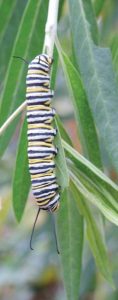 There are many species of milkweed (Asclepias spp.). The genus name honors Asklepios, the Greek god of medicine. Milkweed was once called pleurisy root, referring to an alleged cure for lung inflammations and rheumatism. (It was listed in the American Pharmacopoeia and National Formulary until 1936.) It was also used as a diuretic and laxative. Pleurisy root was the principle ingredient of a favorite quack home remedy from several generations ago called Lydia E. Pinkhams’s Vegetable Compound. It was widely sold and recommended to treat “female problems” and is still available today!
There are many species of milkweed (Asclepias spp.). The genus name honors Asklepios, the Greek god of medicine. Milkweed was once called pleurisy root, referring to an alleged cure for lung inflammations and rheumatism. (It was listed in the American Pharmacopoeia and National Formulary until 1936.) It was also used as a diuretic and laxative. Pleurisy root was the principle ingredient of a favorite quack home remedy from several generations ago called Lydia E. Pinkhams’s Vegetable Compound. It was widely sold and recommended to treat “female problems” and is still available today!
Some milkweed are annuals that self-seed, while others are perennials. I recommend three easily grown natives and one from South Africa.
Butterfly weed Asclepias tuberosa
Although this is not the favorite milkweed for monarchs, it is a much-loved selection for butterfly gardens. This perennial is native to eastern and southern United States and grows 1- to 2-feet tall and blooms June into August with flat-topped clusters of upright bright orange to yellow-orange showy flowers in full sun. The leaves are narrow and lance-shaped. This species does not have milky-sapped stems. The flowers are followed by prominent, spindle-shaped seed pods – up to 4-inches long – that split open when ripe, releasing silky-tailed seeds that are dispersed by the wind. The pods are valued in dried flower arrangements.
Butterfly weed tolerates dry and poor rocky soil but will rot in wet soils. Make note that this plant emerges very late in the spring or you might think you lost it. It is easy to grow from seed but does not always flower the first year. It will self-seed if the seed pods are not removed. Also be aware that butterfly weed does not transplant well because of its deep taproot; do not disturb it once established. Deer do not browse.
Cultivars you might find include ‘Hello Yellow’ and ‘Gay Butterflies’ (orange, red, yellow).
Common milkweed Asclepias syriaca
Common milkweed is frequently found in fields and waste areas and along roadsides. It is easily grown from seed in average, well-drained soil in full sun. Later, it will self-seed if seed pods are not removed before splitting open. Common milkweed also spreads rapidly by underground rhizomes, forming extensive colonies.
The 3- to 4-feet tall, stout, upright stems display reddish-veined, light, ovate leaves that are rich green on the top and lighter green beneath. Drooping, large-ball clusters of fragrant pinkish-purple flowers appear from early to late summer. The stems and leaves exude a milky sap when cut. The warty seed pods split open in September to October, releasing silky seeds to wind dispersal. The seed pods are valued by dried-flower arrangers. Deer do not bother.
Be aware some gardeners might not appreciate the vigor of this plant. If you want to limit the spread, tie a rubber band around the seed pod when it is full size but still green to prevent it opening and releasing seeds when mature.
Swamp milkweed Asclepias incarnata
This milkweed is native to swampy areas but will accept average, well-drained soils in cultivation. It grows 3-4 feet tall with branching stems and deep taproots and is best left undisturbed once established. Fragrant pink or mauve flowers in large, tight clusters appear at the stem ends in high summer. The stems exude a milky sap when cut. Ornamental seed pods follow the flowers and split open, releasing silky-haired seeds that are carried by the wind. Although an important food source for the larval stage of monarchs, it is not as good as the other milkweeds discussed. Consider it for a low spot that is not well-drained. Deer do not browse.
Cultivars you might find: ‘Cinderella’ with light pink flowers; ‘Ice Ballet’ with white flowers and ‘Soulmate’ with medium- and dark-pink flowers.
Balloon plant Gomphocarpus physocarpus
(seeds often sold by former name Asclepias physocarpus)
This milkweed is native to South Africa, but will grow as an annual for us. It is a selection for those gardeners who are always on the lookout for something no one else is growing. Balloon plant grows 3-feet high in full sun with lance-shaped leaves and not particularly showy white flowers in July and August. One would add this to the milkweed collection because of the unusual soft, spiny, balloon-like, lime-green seed pods. They ripen tan and release silky-haired seeds. The suggestive seed pods add some titillation for garden visitors and have also been used in dried-flower arrangements.
Growing Milkweeds From Seed
Milkweeds can be propagated from seed that is easily collected as the pods begin to open. The seeds must be handled properly to ensure successful germination. They require a several-week cold stratification. Do not simply start the seed indoors. Put the seeds in the refrigerator in a moist paper towel in a plastic bag for several weeks before planting. Or better yet, plant the seeds in autumn and they will germinate the following spring. They are very slow to germinate and call for some patience. Always plant directly in the garden rather than a container because of the substantial tap roots.
Other Butterfly-Friendly Plants
The adult monarch butterfly will extract nectar from many different plants, hence the popularity of “butterfly gardens” and specific seed mixtures. Good plants are marigolds, sunflowers, verbena, bee balm, daisies, purple cornflower, sedums, yarrow, asters, coreopsis, black-eyed Susan and bergamots. They also like to feed on bananas, oranges and watermelon.
Milkweed Trivia
If growing a species that produces sap (hence the “milk” name!), be careful not to get it on your skin or in your eyes.
Don’t fail to notice the unusual and complex individual flower structure of all these milkweeds. The five petals reflex backwards.
The seeds, which are arranged in overlapping rows, bear a cluster of white, silky, filament-like hairs known as the coma (often referred to by other names such as pappus, “floss”, “plume” or “silk”). The follicles ripen and split open and the seeds, each carried by its coma, are blown by the wind. The silky appendage assists in dispersing the seed.
During World War II, school children collected over 5 tons of milkweed seeds with comas that were used to stuff lifejackets when kapok was not available. This silky material is still used to stuff hypoallergenic pillows. Milkweed fibers are also used to clean up oil spills.
The highway departments of some states are planting swaths of milkweeds and other wild flowers on the interstate medians and sides of the road.
Milkweed seed packets are great favors at birthday parties and weddings. The guests have something lasting to remember the special day and can feel good about supporting the monarch butterfly.
For more information, visit: Monarchjointventure.org, Monarchwatch.org, Pollinator.org/monarch, Journeynorth.org.





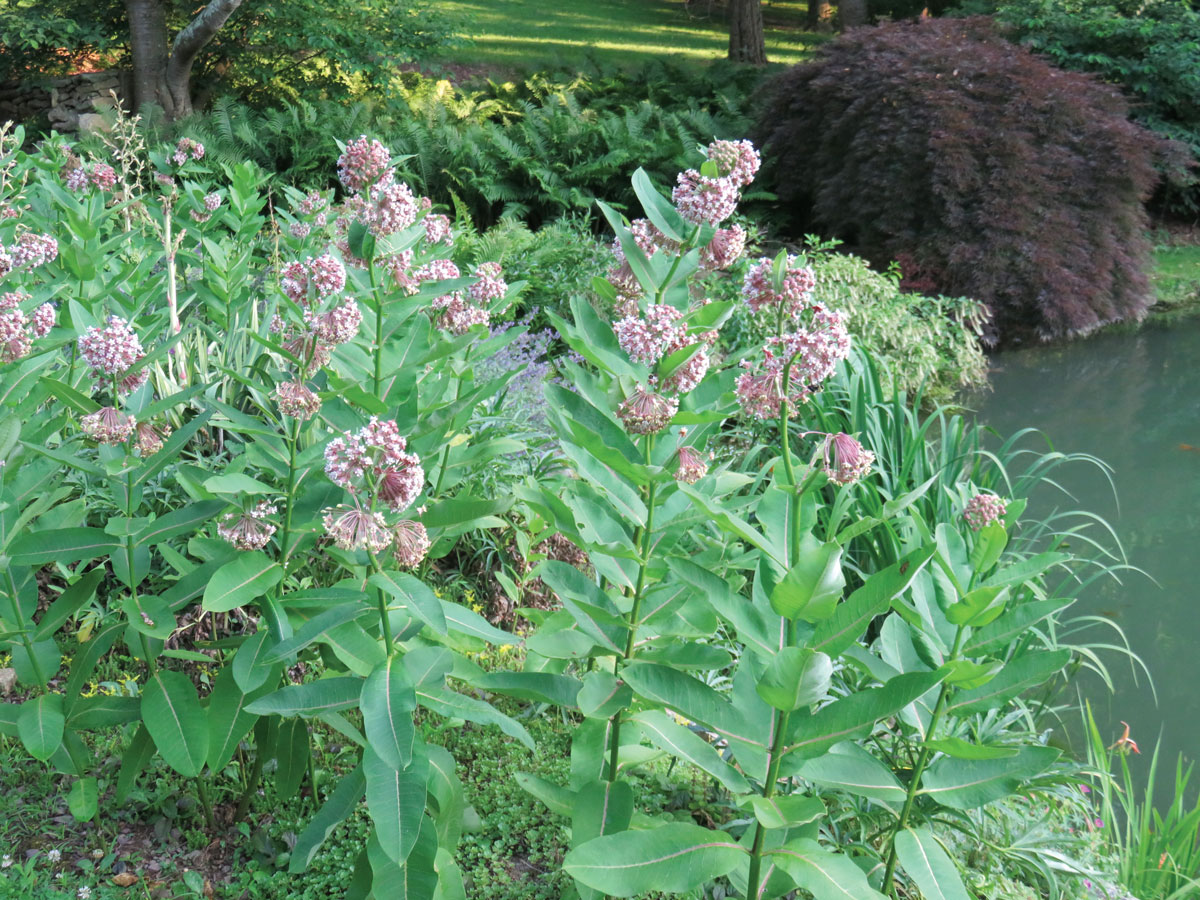
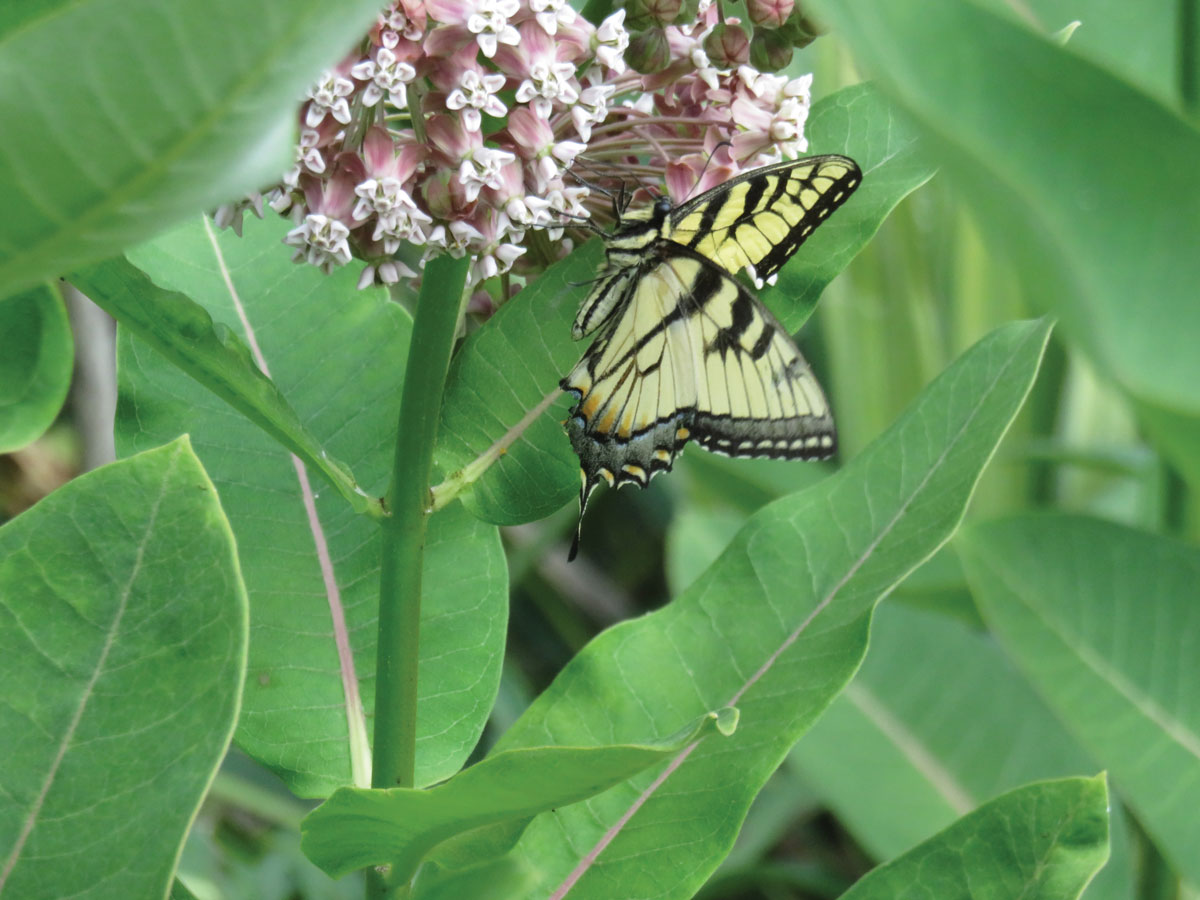
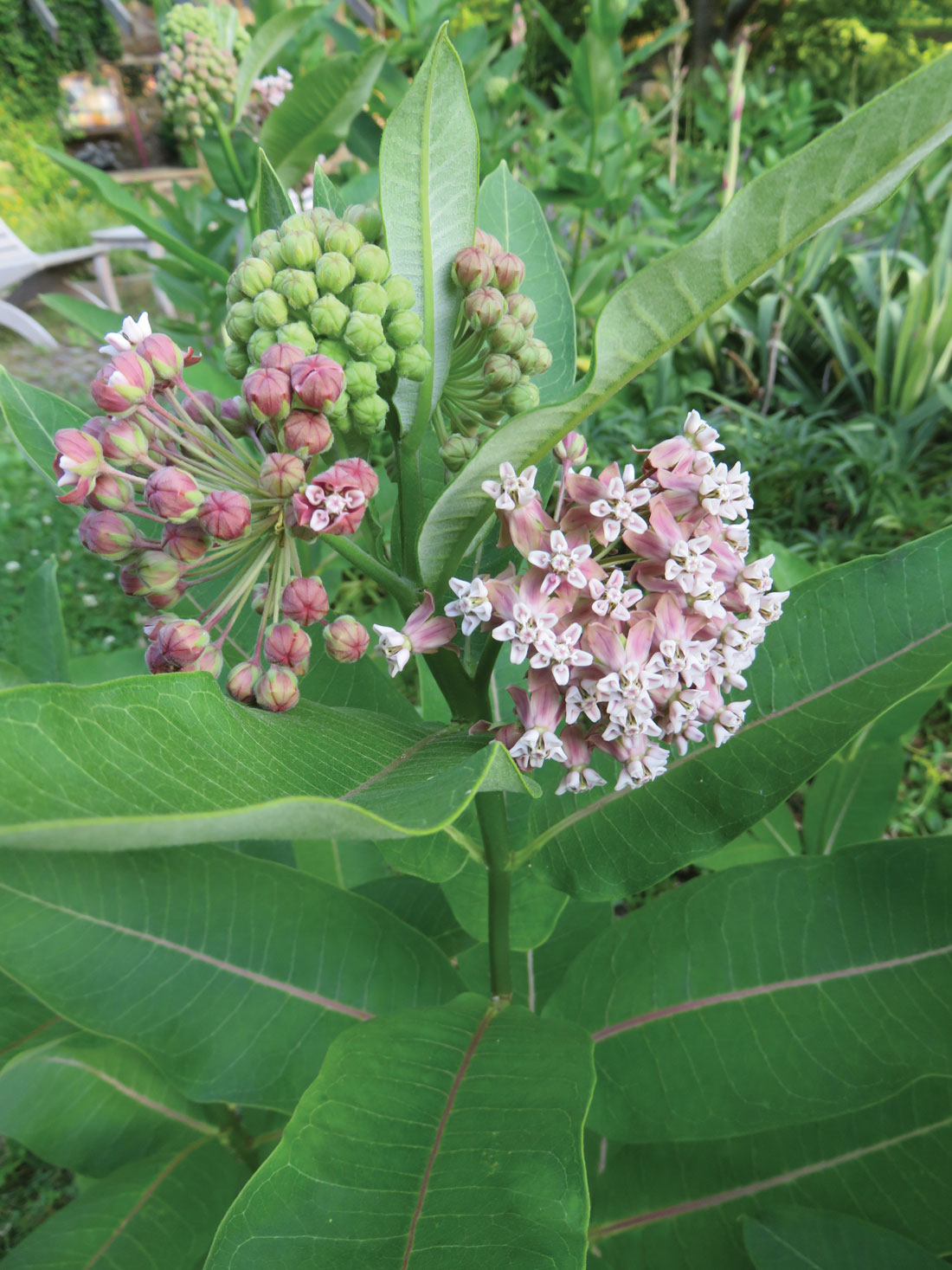
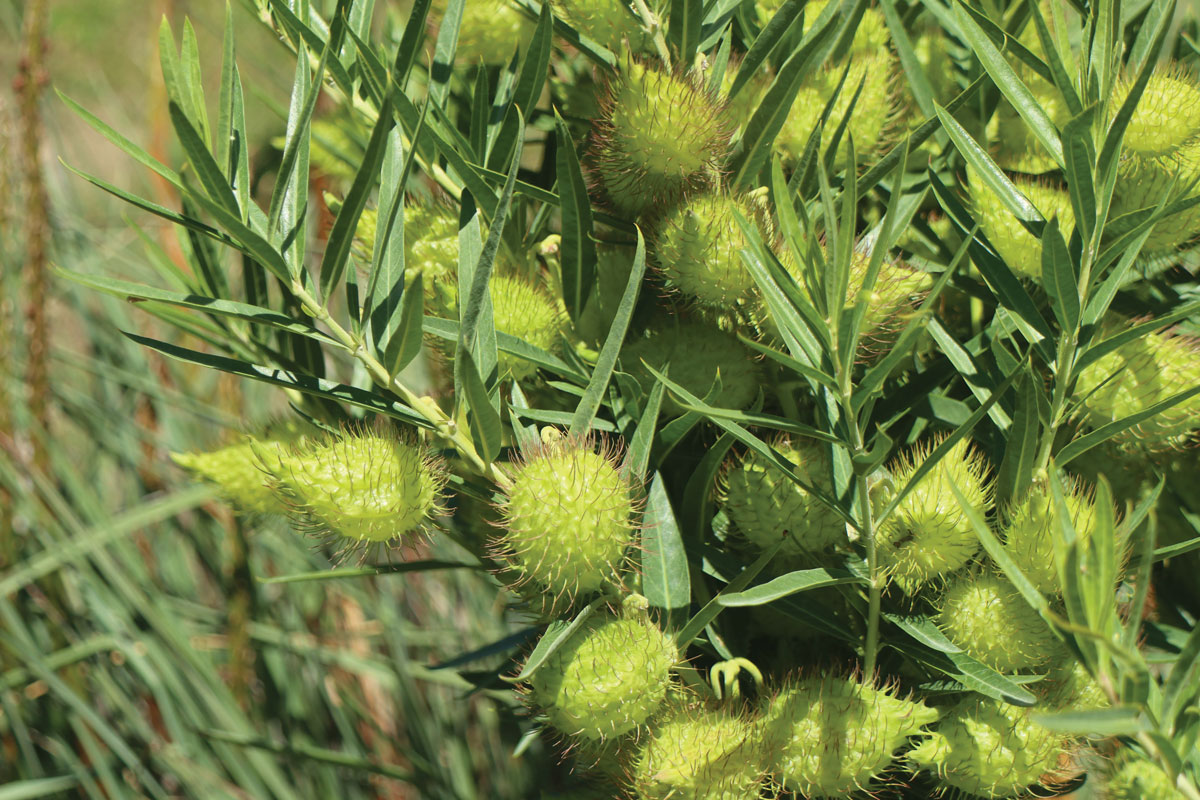
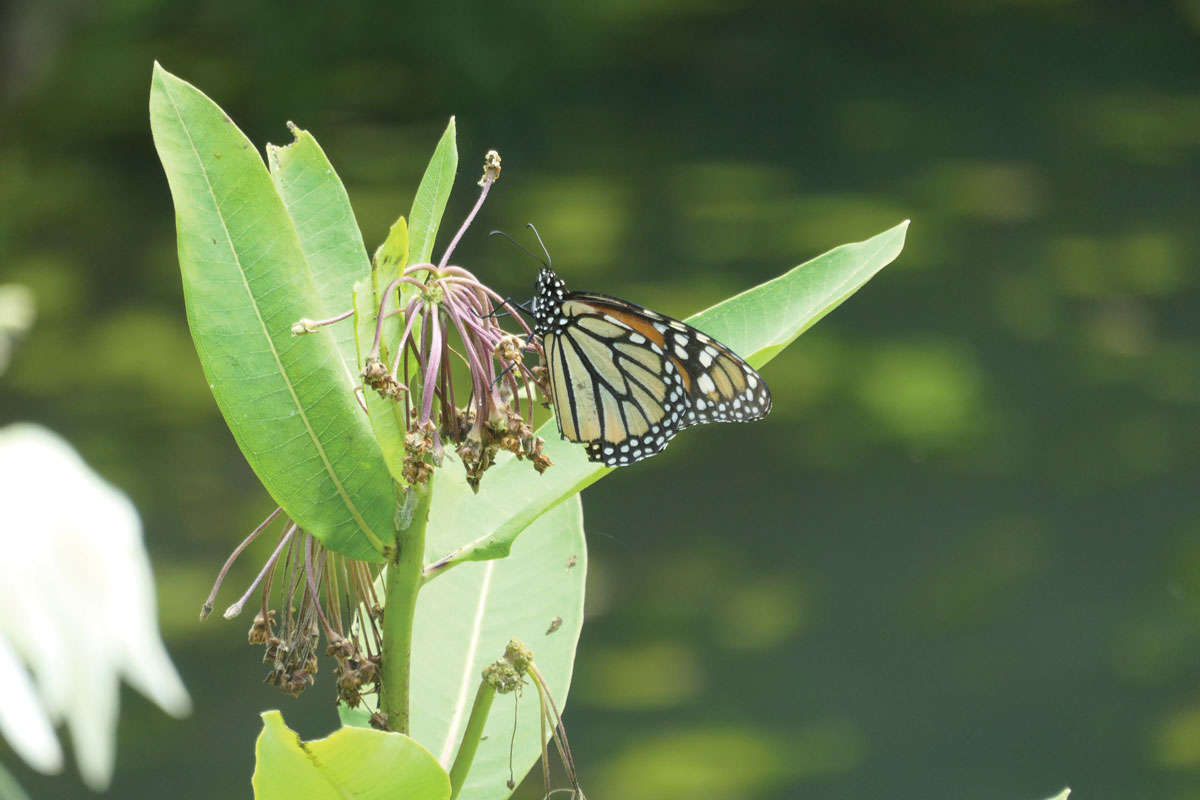
SHARE
PRINT